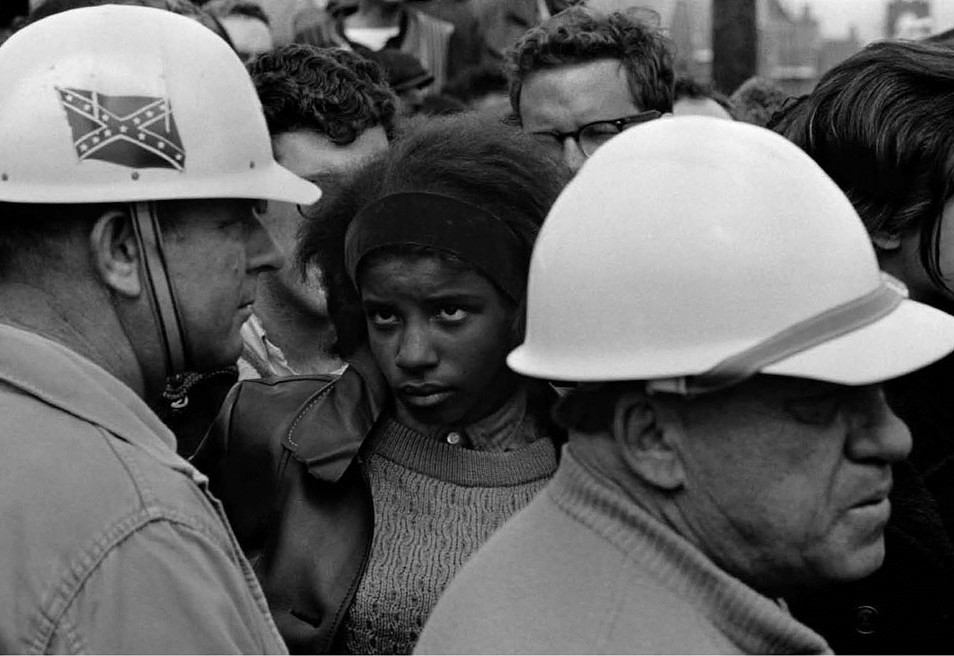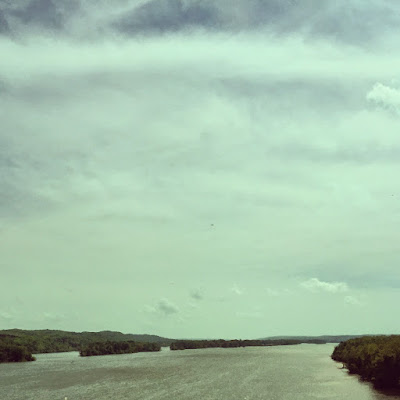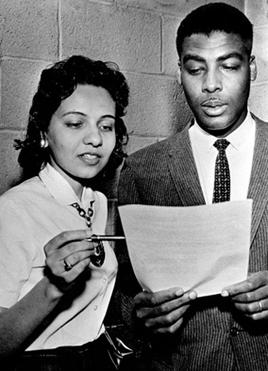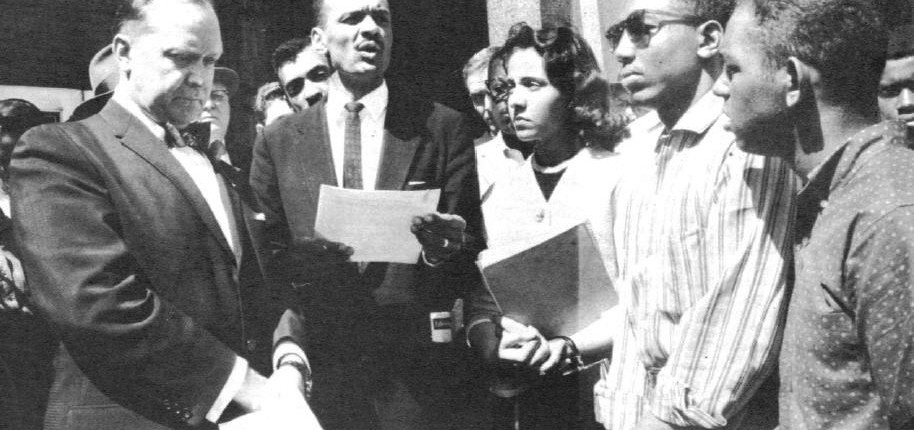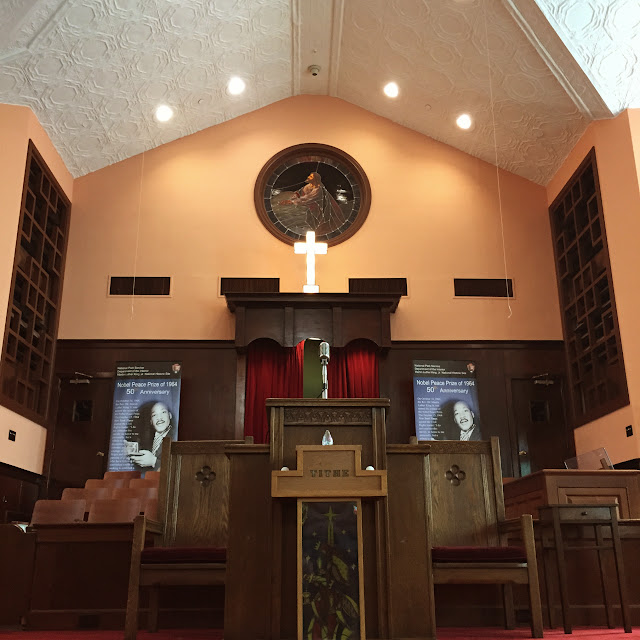today was a hard day and a long day.
there's so much of life that doesn't find its way onto my blog, or facebook or instagram feed.
and for good reason! i already feel like so much of my (pretty uninteresting) life is up for consumption just because i am on social media., but then that edited version can come across as far closer to perfection than actual, real, messy life.
anyway, i'm feeling a bit beat down and tired, so if you're in the same boat (or even if you aren't), here are some pretty peonies to remind you that there are bits of beauty everywhere. (and tomorrow is a new day!)
Wednesday, May 27, 2015
Thursday, May 21, 2015
The People Shouted with a Great Shout
Day 6 & 7: Memphis, Nashville, Monteagle, Tennessee and Atlanta, Georgia
One of the things that I was reminded of over and over on our trip was how much history there is in the not very distant past that I don't know, and if I do know that I don't know well enough. So many stories from this era of struggle that are crushing, horrifying, and then those that are also incredibly beautiful. So many heroes and heroines whose names should be known and passed on, whose words and actions are worth our attention.
We woke up needing a bit of a walk before heading off to another day of soaking in our nation's broken story. We were pretty close to the Mississippi, and so we grabbed breakfast at a great spot and then walked through the quiet city to the river.
A morning view of downtown Memphis from where we stayed.
The lovely park and square just outside of our building.
Matt's happy place: biscuits and gravy and hot black tea.
A little mind map processing of the previous day over breakfast...
We walked past some beautiful old buildings on our way to the Mississippi. I loved all of the details in this facade.
We ended up at a park that pushes up against the Mississippi. This, to me, is what is so jarring about our time in the South. There are so many monuments to the Confederacy, and to figures in the Confederate side of the Civil War, and many of these monuments are side-by-side with landmarks, often unidentified or newly marked, from the Civil Rights struggle. This park is named after Jefferson Davis, who was president of the Confederacy. This huge statue is in the center of the park. How can the regional culture that even now honors a movement - the Confederacy/the Civil War/etc. - that was made possible by the labor and lives of slaves not still be influenced by remnants of that past?
Our walk to the Mississippi was a little disappointing. I wanted to sit by the water and watch it rolling by, to gather my thoughts from yesterday and prepare for the coming day, but there was a massive BBQ festival blocking off a huge span.
And also, I'm not going to lie: Whenever I think of Memphis and the Mississippi, I think of this scene in the U2 documentary Rattle and Hum. If you watch the first minute or so of this clip, you'll see why:
We wound around the perimeter of the festival to get sort of close to the water, but the peace that was resting on the city streets that we'd just walked through was nowhere to be found as all the vendors and tents set up, so we left to head out of Memphis. I downloaded the song Heartland onto my phone to play as we drove away from the Mississippi.
Just as we began to drive to the freeway to Nashville, Matt threw out the idea of going back to the Brooks Museum of Art, which we had passed by the day before. They were having an exhibit called This Light of Ours: Activist Photographers of the Civil Rights Movement, so we decided to stop by to see if it was any good.
First we went through their permanent collection; I always like going to smaller museums to see what they have, especially because they often have less widely known regional artists. It was a nice break to see some art. I liked these two pieces....
The photography exhibit was AMAZING. I'm so glad we detoured to see it. All of these images are also in the book This Light of Ours, and is available on Amazon (or even better at your local bookstore!)
The photographs captured so well the ordinary people who were involved in the "ground up" movement. I teared up at many of the 150+ images. Really powerful.
I highly recommend buying the exhibit book. Or you can borrow ours!
At the conclusion of the exhibit, you had the opportunity to respond to the work by making a pledge to act in some way based off of the photographs.
I was so grateful we'd decided to stop at the museum; it also felt like the photographs honored the lives of so many regular people whose names will never show up in history books. Once again I was reminded of the incredible sacrifices people of all ages and races made to seek equality.
Back in the car we drove across Tennessee to Nashville. The landscape was so beautiful, and most of what we drove through was rural, so it was a peaceful drive.
We got to Nashville a few hours later, and went to the little church where James Lawson trained so many students and volunteers in non-violent resistance. (You might have seen clips of this in Selma or in The Butler) Among many others I've been learning about, James Lawson was incredibly inspiring to me. He was a conscientious objector to the Korean War, and so was sentenced to three years in prison, and he served over a year. Wow. That's called not just talking about your opinions but living them out! Add him to my growing list of people I want to learn more about and become more like.
"Through non-violence, courage displaces fear; love transforms hate. Acceptance dissipates prejudice; hope ends despair. Peace dominates war; faith reconciles doubt. Mutual regard cancels enmity. Justice for all overthrows injustice. The redemptive community supersedes systems of gross social immorality.” ~ James Lawson, Student Nonviolent Coordinating Committee
We drove up and saw someone inside, so Matt went up to talk to him. He told us we'd just missed a church member who had been around forever and knew a ton about that period that would've answered our questions. Then, of course, he invited us to church the next morning! Another church member was doing some maintenance inside the church so he let us come in and walk around and talk for awhile.
Just as in many of the places we stopped there was nothing special about the actual church building, but it did feel as if we were stepping into a space that was holy. Not because it was a church, but because the holy actions of putting others before yourself, of loving others more than your own safety, of living the way Jesus would have.
It is incredible to me how those practitioners of non-violence were able to resist acting out in anger when they were being mocked, taunted and hurt.

Rev. James Lawson- a mug shot from the Freedom Rides in Mississippi
This is a great clip, less than five minutes, with footage of the non-violent trainings that Lawson did
It was a beautiful Nashville afternoon!
Down the street from the church
The original NAACP building is still a block away from the church, in a building owned for a long time by an African American businessman.
We went to nearby Fisk University, where many of the students who were the foot soldiers for the lunch counter sit-ins attended.
I loved this little factoid:
Then we drove a few miles to the seminary where many of the young civil rights organizers attended and planned non-violent actions.
Nashville at night! We went to an amazing dinner that evening.
The next morning before leaving Nashville we walked over the river and to downtown
In April 1960, the Nashville, Tennessee home of African-American lawyer (and later city councilman) Z. Alexander Looby is destroyed by dynamite. In response, students from Fisk University march silently to the county courthouse. All I could imagine as I walked up to it was this entire grassy field filled with thousands of silent, mourning marchers.
The Mayor at the time came out to the protestors. College student and leader Diane Nash went up to him and boldly asked him about whether he thought it was ok for the lunch counters to be segregated. (Below: Diane Nash)
Diane Nash speaking to Mayor
When the mayor responded no he didn't think they should be segregated, he quickly attempted to back peddle, saying that it should be up to the business owners. Whoops! He had spoken too quickly- the next day the newspapers reported that the Mayor had declared the lunch counters should be integrated. And so they were.
Diane Nash went on to be very active in the Freedom Rides and as a civil rights organizer.
"Traveling in the segregated South for black people was humiliating. The very fact that there were separate facilities was to say to black people and white people that blacks were so subhuman and so inferior that we could not even use public facilities that white people used.” ~ Diane Nash, Freedom Rides Organizer
Many of the locations where the lunch counter sit-ins where held have been remodeled into new businesses and are unmarked, but we visited all of the addresses even though they were just buildings or remainders of buildings. It was powerful to imagine the same spots 50 years ago, and the bravery it took these students to sit as people relentlessly abused them.
The Walgreens is the only building that is still the original business:
Right across the street was another lunch counter and is now a Dollar General.
We spotted a yet-to-be unveiled historical marker to these sit-ins. Crazy to me that aside from this brand new (and not even visible) marker there is nothing to honor the sit-ins.
We left Nashville and headed back to the country roads to our last stop in Monteagle, Tennessee before our final destination, Atlanta.
We were trying to find the original site of the Highlander Folk School, a integrated training school for many in the civil rights movement. Today it is also unmarked, and the only way we found it was by stopping at the local police station (a random little building which smelled like it was inhabited by chain smokers.) They waved their hands in a general direction and gave us some roads to turn down, with an apologetic, "I think that's where it might be."
We drove in the direction they sent us, while I also speed-read an article our friend Keith had sent us about the Highlander Folk School. It gave us the landmark of the adjacent cemetery, and a small photo of a low-slung white house. I put the cemetery into my phone and it led us down this road...
To this! We turned down the lane, and drove down a couple of houses where we discovered a house that looked identical to the one in the online article.
We found it! (Thank you, Keith for sending us that article! Otherwise we would've never found it.) The building is now empty, and my guess is that it will likely fall apart unless the state or a private donor rehabs it. There is nothing to let you know how this space once operated, and a next-door neighbor does the upkeep on the exterior and surrounding grounds. I'd never heard of the Highlander School before this trip, despite the fact that it was so instrumental to so many in the movement.
The Highlander School was started by (the pretty great) Myles Horton. "He wanted blacks and whites to meet and improve their lives. Horton envisioned a place for liberals and Southern radicals to come together. He applied this concept to the Highlander School in order to create an atmosphere for social change.
The interior- I snuck this photo through the window. I imagined all of the conversations that happened in this room.
One of the billboards saying King was involved in a Communist school (while at Highlander in that room) in order to discredit him.
The same article Keith sent us mentioned a log cabin where King stayed while at Highlander. This log cabin is just two house away from the Highlander School, so I'm guessing this is where MLK stayed.
We walked down the lane to the cemetery where we read that Myles Horton (you can read more about him here), was buried with his family, even though the Highlander School was moved to Knoxville (where it still is today).
We walked all over the cemetery to try and find Horton's grave. I finally found his family's plot: a group of small, plain stones.
One of my favorite stories that we read in the Rosa Parks' Museum (which I am realizing I didn't even write about, but we went there in Montgomery) is what Rosa said about the Highlander School when she came for a ten day inter-racial workshop: "One of my greatest pleasures there was enjoying the smell of bacon frying and coffee brewing and knowing that white folks were doing the preparing instead of me. I was 42 years old, and it was one of the few times in my life up to that point when I did not feel any hostility from white people."
I thought about that as I looked at Myles Horton's grave, and I thought about how much resistance and fear there was to what he was doing in that little spot in the mountains of Tennessee. I thought about how the state used ridiculous means to shut them down, and yet undeterred, he started his school up in a new spot almost immediately. I thought about how his religious faith guided him to do what was surely unpopular and dangerous. I thought about how his entire life was made up of fighting for the poor and the left out. I thought about our friends' son Myles, who is named after Myles Horton, and I said a prayer that he would also be brave and committed to justice and equality.
As we drove out another way, we actually found a marker out along the main road.
We hopped in the car as fast as we could to go to Atlanta, driving South through the remainder of Tennessee back into Georgia. We were trying to get to Atlanta to visit Dr. King's childhood home. As we raced the clock we passed gorgeous country.
Sadly we got to Atlanta in time...kind of! The time change between Tennessee and Atlanta meant we arrived just as they closed. Even though it was close to when the King Center closed down for the day there were so many people everywhere, taking pictures, touring the different areas (the entire city block is devoted to King, Ebenezer Baptist, the parsonage, exhibits, etc.) It was in such sharp contrast to many of the places we stopped, where they were little blips on a town's landscape. So many people of such different backgrounds stopping to honor King's life...it was quite striking.
We went into Ebenezer Baptist Church, where Dr. King's father was a pastor, and where King briefly pastored.
Sermons by MLK Jr are piped throughout the church sanctuary. Unlike the other churches we went to, which are all still operating congregations, this church building is now a historical site run by the National Parks Service. The operating church is across the street.
The parsonage where King grew up is just down the block, and although it was closed inside, we looked at the exterior. One of the tidbits of information in the adjoining gift shop was that King's room that he shared was always messy growing up. I mistakenly sent that in a text along to my children! Now they will forever have an excuse for not cleaning up!
Our last stop, the eternal flame which is in front of King's tomb. The inscription reads, "The Eternal Flame symbolizes the continuing effort to realize Dr. King’s ideals for the “Beloved Community” which requires lasting personal commitment that cannot weaken when faced with obstacles."
And the final resting place for Dr. King and Coretta Scott King.
In many ways this trip leveled me in the very best ways. I remember as a teenager I had a big poster of MLK Jr. up in my room (along with James Dean and U2. Ha!) His ideals inspired me, even though I knew of them only in broad strokes. This week of taking time and space to honor his vision for a beloved community only made me want to examine my own life. How am I parenting? Am I modeling sacrificial love to my children? Am I teaching them to be brave? Am I showing them what it means to name hate and cowardice? Am I willing to use my privilege to benefit others? Am I willing to name the ugly parts of our country's history and actively work towards justice? What is happening in our world right now that is as blatantly wrong that I should stand in opposition to? How can these radical stories of love and action become engrained in me?
In the beginning this trip was for Matt, because he is the one who has done all of the study and the reading. But in the end it was also for me, because it is almost impossible not to be transformed and challenged by these stories. Somehow the choices that people made over 50 years ago made me consider my own choices. I want to know how to weave goodness and justice and courage and love into my own story, how to seek these things in my own city and on my own street. I hope you will too.
With much gratitude for joining me on this journey.
"The end is reconciliation; the end is redemption; the end is the creation of the Beloved Community. It is this type of spirit and this type of love that can transform opponents into friends. It is this type of understanding goodwill that will transform the deep gloom of the old age into the exuberant gladness of the new age. It is this love which will bring about miracles in the hearts of men." Martin Luther King, Jr.
Subscribe to:
Posts (Atom)















